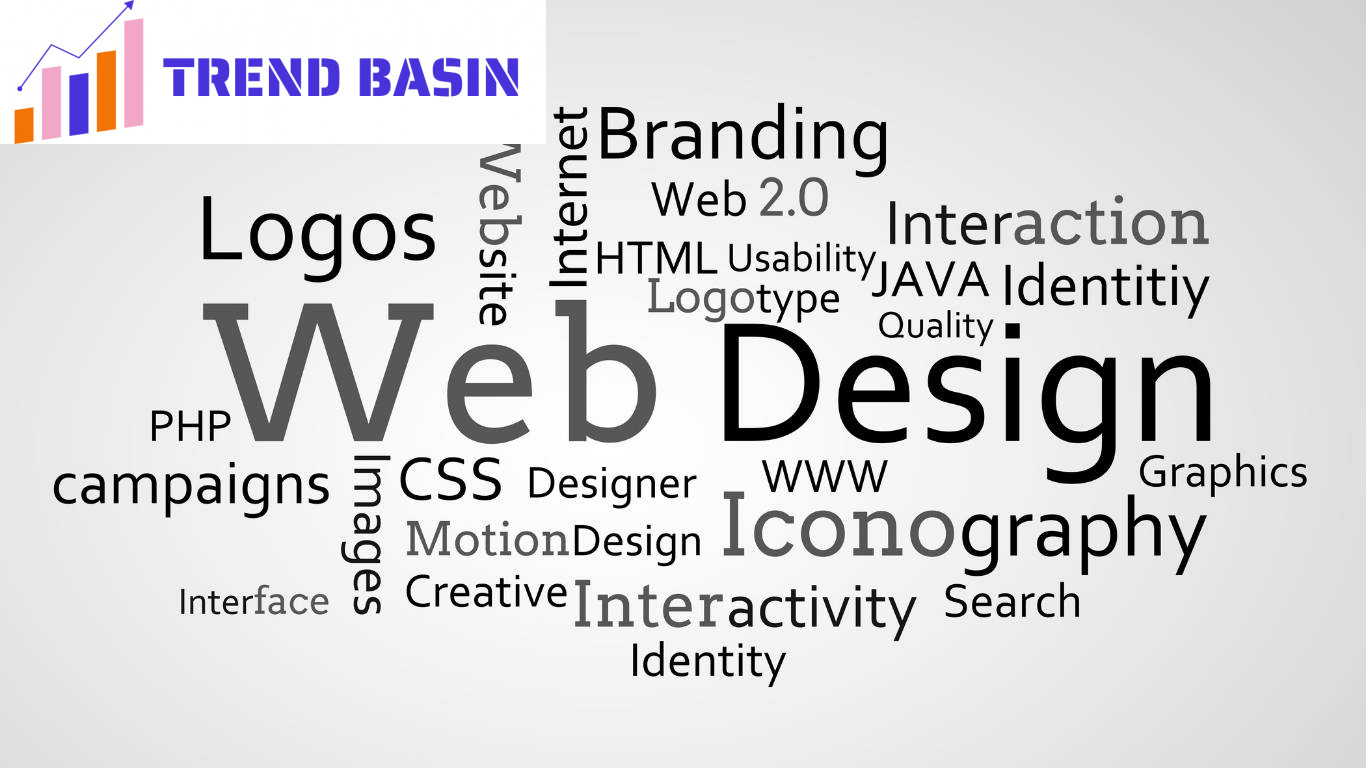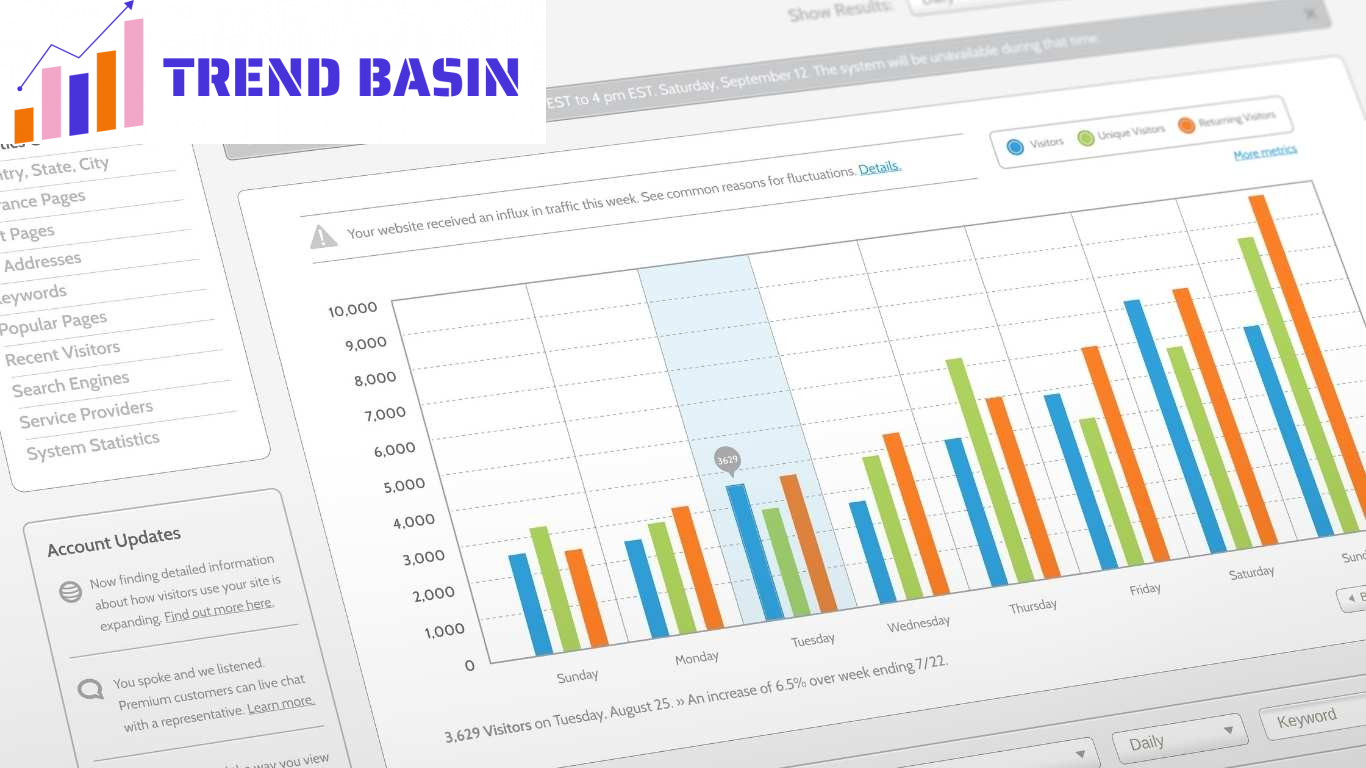The Role of Typography in Web Design
Typography plays a vital role in web design, influencing how users perceive and interact with content.
At Trend Basin, we understand that effective typography can enhance user experience, improve readability, and reinforce brand identity.
In this article, we will explore the significance of typography in web design, best practices for implementation, and real-world examples that illustrate its impact.
Key takeaways
- Typography shapes the user experience and can either engage or repel visitors.
- Choosing the right typefaces enhances readability and accessibility.
- Consistency in typography strengthens brand identity.
- Responsive typography adapts to different screen sizes, improving user experience.
- Analyzing case studies can provide insights into effective typography use.
What is typography in web design?
Typography in web design refers to the art and technique of arranging text on a webpage.
It encompasses various elements, including typefaces, font sizes, line spacing, letter spacing, and text alignment.
The goal of typography is to create visually appealing and readable content that enhances the overall user experience.
Importance of typography in web design
Typography is more than just making text look attractive.
Here are several reasons why typography is essential in web design:
- First impressions matter: Users often form opinions about a website within seconds.
A well-chosen typeface can convey professionalism, creativity, or friendliness, impacting their overall impression.
- Enhances readability: Proper typography makes text easier to read.
If users struggle to read content, they are likely to leave the site.
- Supports brand identity: Typography can reinforce brand identity by reflecting the brand’s personality and values.
- Guides user attention: Effective typography helps guide users through content, emphasizing important points and calls to action.
- Improves user experience: A well-structured typographic hierarchy enhances navigation and overall user experience.
Key elements of typography
To leverage typography effectively in web design, it’s essential to understand its core components:
1. Typeface
The typeface is the design of the text.
There are several categories of typefaces, including:
- Serif: Fonts with small lines or decorative strokes at the ends of characters (e.g., Times New Roman).
- Sans-serif: Fonts without the small lines at the ends (e.g., Arial, Helvetica).
- Script: Fonts that mimic cursive handwriting (e.g., Pacifico).
- Display: Decorative fonts used for headlines and emphasis (e.g., Impact).
2. Font size
Font size refers to the height of the text.
Choosing the right font size is crucial for readability.
A general guideline is to use at least 16 pixels for body text.
3. Line height
Line height (or leading) is the vertical space between lines of text.
Proper line height enhances readability, as too little spacing can make text feel cramped.
A good rule of thumb is to set line height to 1.5 times the font size.
4. Letter spacing
Letter spacing (or tracking) refers to the space between characters.
Adjusting letter spacing can affect the readability and aesthetic of text.
5. Text alignment
Text alignment refers to how text is positioned within a container.
Common alignment options include:
- Left-aligned: The most common alignment for body text.
- Right-aligned: Often used for short text elements or in design contexts.
- Centered: Typically used for headings or promotional text.
- Justified: Text is aligned to both the left and right margins, creating a clean look.
Best practices for typography in web design
To create effective typography in web design, follow these best practices:
1. Choose legible typefaces
Select typefaces that are easy to read on screens.
Consider using sans-serif fonts for body text, as they tend to be more legible on digital devices.
Tip: Use a limited number of typefaces (ideally two or three) to maintain consistency throughout your design.
2. Create a typographic hierarchy
Establish a clear hierarchy to guide users through your content.
Use varying font sizes, weights, and styles to differentiate headings, subheadings, and body text.
Example: A common hierarchy might include:
- H1: 32px, bold
- H2: 24px, semi-bold
- H3: 18px, regular
- Body text: 16px, regular
3. Maintain contrast
Ensure there is enough contrast between text and background colors for readability.
Dark text on a light background or light text on a dark background usually works well.
Tip: Use online contrast checkers to ensure your color choices meet accessibility standards.
4. Use whitespace effectively
Whitespace (or negative space) is the area around and between elements.
Effective use of whitespace enhances readability and creates a more visually appealing layout.
Tip: Avoid cramming too much text into a small area, as this can overwhelm users.
5. Optimize for responsiveness
Ensure your typography is responsive and adapts to various screen sizes.
Use relative units (like em or rem) instead of fixed units (like pixels) for font sizes to achieve better responsiveness.
Tip: Use media queries to adjust typography for different devices.
6. Test and iterate
Regularly test your typography choices to gauge their effectiveness.
Gather feedback from users and make adjustments as necessary.
Case Study: A popular e-commerce site tested various font combinations and sizes to improve readability.
Through A/B testing, they discovered that increasing the font size for product descriptions led to higher conversion rates.
7. Consider accessibility
Ensure your typography choices are accessible to all users.
This includes providing alt text for images, using descriptive link text, and maintaining sufficient color contrast.
Tip: Use tools like the WAVE Web Accessibility Evaluation Tool to assess the accessibility of your site.
Real-world examples of effective typography
Let’s explore some successful websites that effectively leverage typography in their designs:
Example 1: Apple
Apple’s website showcases clean, legible typography that aligns with its brand identity.
- Typefaces: Apple uses a custom typeface called “San Francisco,” which is designed for readability on screens.
- Hierarchy: The site employs a clear typographic hierarchy, with bold headings and concise body text that guide users through information seamlessly.
Example 2: Medium
Medium is known for its focus on content, and its typography reflects that.
- Minimalism: The site features a clean, sans-serif typeface with ample whitespace, allowing readers to focus on the articles.
- Readability: The font size is easily adjustable for users, and the line spacing is optimized for comfortable reading.
Example 3: Airbnb
Airbnb effectively uses typography to enhance its user experience.
- Brand consistency: The site utilizes a consistent font choice that aligns with its branding.
- Navigation: Typography is used to create a clear navigation structure, allowing users to find listings and information quickly.
Example 4: Dropbox
Dropbox employs simple typography to maintain clarity and functionality.
- Readability: The font choice is clean and legible, making it easy for users to navigate the platform.
- Hierarchy: Clear headings and subheadings guide users through content, enhancing usability.
The impact of typography on SEO
While typography primarily focuses on design, it can also impact SEO.
- User engagement: Good typography enhances user experience, which can lead to longer session durations and lower bounce rates—both positive signals for search engines.
- Readability: Search engines favor content that is easy to read and understand.
Using clear typography can improve the overall readability of your content, which may contribute to better SEO performance.
- Mobile optimization: As mobile usage increases, having responsive typography is crucial for maintaining user engagement across devices.
Strategies for optimizing typography for SEO
To optimize your typography for SEO, consider the following strategies:
- Use descriptive headings: Utilize heading tags (H1, H2, H3) effectively to structure your content.
- Include keywords: Integrate relevant keywords into your headings and body text while maintaining readability.
- Optimize for mobile: Ensure your typography is responsive, providing a seamless experience across devices.
- Monitor user behavior: Use analytics tools to track user engagement and adjust typography choices based on data.
Typography trends to watch
Staying updated on typography trends can help keep your web design fresh and engaging.
1. Variable fonts
Variable fonts allow for multiple styles and weights within a single font file.
This flexibility enables designers to create dynamic typography that adapts to different contexts.
2. Bold typography
Using bold typography for headings and calls to action is becoming increasingly popular.
This trend emphasizes important information and draws user attention.
3. Custom typography
Many brands are now opting for custom typefaces that reflect their unique identities.
Custom typography can set a brand apart and enhance its overall visual appeal.
4. Minimalist fonts
Minimalist fonts with clean lines and simple designs are gaining traction in web design.
These fonts contribute to a modern aesthetic and improve readability.
5. Handwritten fonts
Handwritten fonts add a personal touch and can create a sense of authenticity.
However, they should be used sparingly to avoid compromising readability.
Conclusion
Typography is a crucial element of web design that influences user experience, readability, and brand identity.
By understanding its importance and following best practices, designers can create visually appealing and effective websites.
Regularly analyze case studies and test typography choices to ensure they meet user needs and preferences.
As you explore the role of typography in your web design, consider connecting with us on LinkedIn and Facebook for more insights and tips on enhancing your digital presence.



